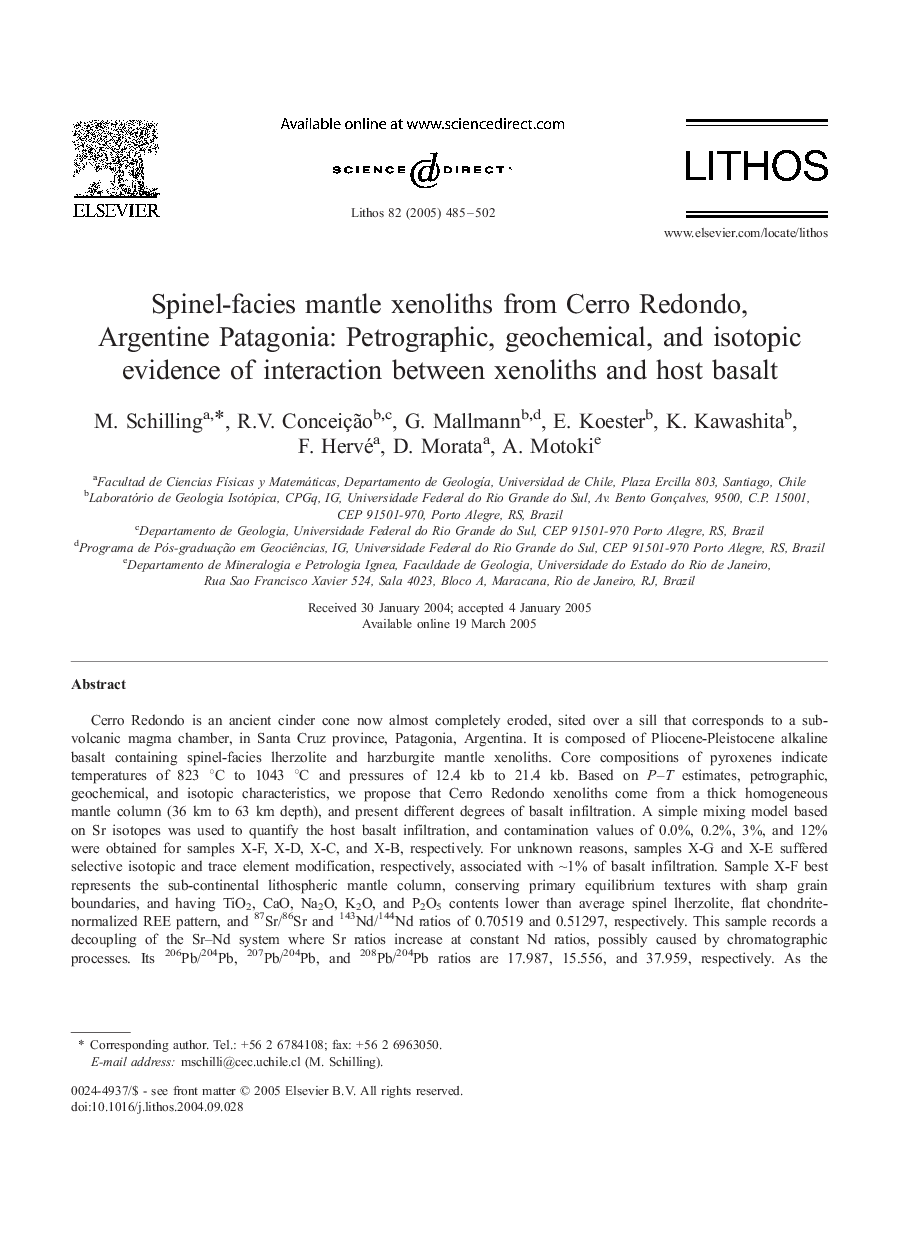| Article ID | Journal | Published Year | Pages | File Type |
|---|---|---|---|---|
| 9531863 | Lithos | 2005 | 18 Pages |
Abstract
Cerro Redondo is an ancient cinder cone now almost completely eroded, sited over a sill that corresponds to a sub-volcanic magma chamber, in Santa Cruz province, Patagonia, Argentina. It is composed of Pliocene-Pleistocene alkaline basalt containing spinel-facies lherzolite and harzburgite mantle xenoliths. Core compositions of pyroxenes indicate temperatures of 823 °C to 1043 °C and pressures of 12.4 kb to 21.4 kb. Based on P-T estimates, petrographic, geochemical, and isotopic characteristics, we propose that Cerro Redondo xenoliths come from a thick homogeneous mantle column (36 km to 63 km depth), and present different degrees of basalt infiltration. A simple mixing model based on Sr isotopes was used to quantify the host basalt infiltration, and contamination values of 0.0%, 0.2%, 3%, and 12% were obtained for samples X-F, X-D, X-C, and X-B, respectively. For unknown reasons, samples X-G and X-E suffered selective isotopic and trace element modification, respectively, associated with â¼1% of basalt infiltration. Sample X-F best represents the sub-continental lithospheric mantle column, conserving primary equilibrium textures with sharp grain boundaries, and having TiO2, CaO, Na2O, K2O, and P2O5 contents lower than average spinel lherzolite, flat chondrite-normalized REE pattern, and 87Sr/86Sr and 143Nd/144Nd ratios of 0.70519 and 0.51297, respectively. This sample records a decoupling of the Sr-Nd system where Sr ratios increase at constant Nd ratios, possibly caused by chromatographic processes. Its 206Pb/204Pb, 207Pb/204Pb, and 208Pb/204Pb ratios are 17.987, 15.556, and 37.959, respectively. As the interaction with the host basalt increases, xenoliths show a gradual increase of disequilibrium textures such as reaction rims and exsolution lamellae in orthopyroxene and clinopyroxene, and increase of TiO2, CaO, Al2O3, Na2O, K2O, P2O5, LREE, and incompatible element concentrations. The Sr-Nd system shows an unusual positive trend from the unmodified sample X-F toward the host basalt isotope composition with 87Sr/86Sr and 143Nd/144Nd ratios of 0.70447 and 0.51279, respectively, while 206Pb/204Pb, 207Pb/204Pb, and 208Pb/204Pb ratios tend to increase toward those of the host basalt (18.424, 15.648, and 38.728, respectively) as the xenolith-basalt interaction increases. The basalt-xenolith reaction probably started during the transport of the xenoliths to the surface, and continued during the residence of xenoliths in the sub-volcanic magma chamber of Cerro Redondo.
Related Topics
Physical Sciences and Engineering
Earth and Planetary Sciences
Geochemistry and Petrology
Authors
M. Schilling, R.V. Conceição, G. Mallmann, E. Koester, K. Kawashita, F. Hervé, D. Morata, A. Motoki,
